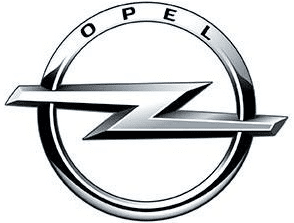 General Motors has a problem in Europe. The world’s second largest automaker European Opel brand (named Vauxhall in the UK) is losing money faster than drunk guy in a strip club.
General Motors has a problem in Europe. The world’s second largest automaker European Opel brand (named Vauxhall in the UK) is losing money faster than drunk guy in a strip club.
For decades, Opel has been GMs European bread-and-butter brand, competing with Ford, Peugeot, and Volkswagen for the likes of families looking for safe and comfortable, non-pretentious transportation. But the European car market has shifted away from the middle-of-the-road brands, and unless you’re a preamium or low-cost brand, you’re in trouble, especially without any chance of growing your volume outside of Europe. Several competitors have come up with different strategies to cope with this reality.
Should Opel follow any of these strategies?
Volkswagen strategy
Volkswagen reacted to the rise of (mostly South-Korean) budget competition by moving its core VW brand more upmarket by introducing more advanced technology, better individualization options and more luxurious interiors, with some help from its premium Audi brand, meanwhile re-introducing Skoda as a budget competitor for price sensitive customers.
But it’s extremely difficult to move a mainstream brand like Opel upmarket into (semi)premium territory, and it will take huge investments into technology, design and marketing. Money that GM is not willing to spend on a “local brand” like Opel, especially one that has already lost an unimaginable $ 18 Billion in the past 12 years. And it will also take a lot of time, at least a few decades, to get the new, higher-end image into the minds of consumers. Time the brand doesn’t have, with stockholders breathing down GMs neck, looking for it to focus on high-growth markets and brands, offering a quick return on investment. Arguably, VW isn’t quite there yet either.
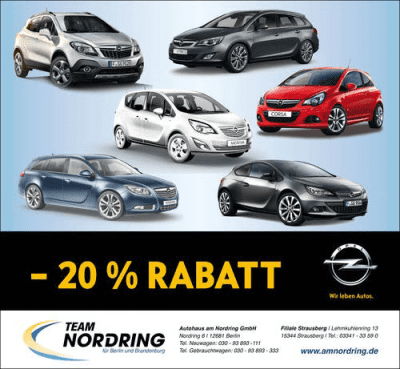 And it might be too late for Opel to make the turnaround, as rumors of General Motors selling or even killing the brand have hurt sales. As a result, Opel has had to offer huge discounts and incentives on their models in order to keep the factories running and to keep stocks from rising. This has hurt Opel’s brand value, as it has become known as a brand that sells the deal instead of the car, in the same way Chevrolet has been viewed by Americans for years.
And it might be too late for Opel to make the turnaround, as rumors of General Motors selling or even killing the brand have hurt sales. As a result, Opel has had to offer huge discounts and incentives on their models in order to keep the factories running and to keep stocks from rising. This has hurt Opel’s brand value, as it has become known as a brand that sells the deal instead of the car, in the same way Chevrolet has been viewed by Americans for years.
PSA Peugeot-Citroën strategy
PSA is facing a similar challenge as GM with Opel and Chevrolet: juggling two mainstream brands, competing in similar segments, both comparably priced towards a price-sensitive customer. The French try to pull it off by differentiating image and design between the brands, with Peugeot the more traditional brand and Citroën the somewhat quirky and more trendy brand, but sales and market share are still way down on a few years back. They have come up with a semi-premium DS sub-brand, which is commanding higher prices and margins, and is relatively successful, although it won’t make up for those sales lost by the main brands. Moreover, the French are currently selling 40% of their vehicles outside of Europe, moving towards 50% to reduce their vulnerability.
General Motors doesn’t exactly have fond memories of offering competing brands in the mainstream market, as it has done with Chevrolet, Oldsmobile, Pontiac and Saturn for decades in the United States. Remember how many of those brands still exist today? Oh wait, that’s just one: Chevrolet!
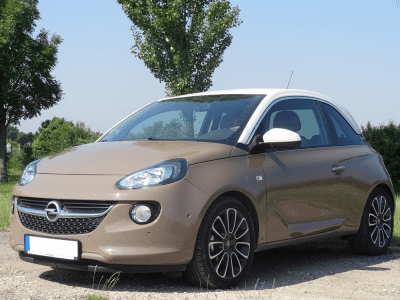 Opel might just pull it off to become the sportier, more trendy brand next to Chevrolet, despite their grey-haired customer base for cars like Agila, Meriva and Zafira. They have been showing off a concept vehicle called Monza, which is supposed to hint at the design direction Opel is following in the near future, and that certainly is a strikingly good looking car. They have also introduced a hip and trendy car to compete with the likes of Mini, Audi A1 and Fiat 500, called Adam. It has been received with lukewarm welcome, selling just over 35.000 units in the first three quarters of 2013, compared to almost 74.000, 121.500 and 75.000 sales respectively for Mini, A1 and 500. That is not at all bad for a premium-priced, customizable trendy compact in a segment where Opel was only selling the Suzuki-built Agila for senior citizens.
Opel might just pull it off to become the sportier, more trendy brand next to Chevrolet, despite their grey-haired customer base for cars like Agila, Meriva and Zafira. They have been showing off a concept vehicle called Monza, which is supposed to hint at the design direction Opel is following in the near future, and that certainly is a strikingly good looking car. They have also introduced a hip and trendy car to compete with the likes of Mini, Audi A1 and Fiat 500, called Adam. It has been received with lukewarm welcome, selling just over 35.000 units in the first three quarters of 2013, compared to almost 74.000, 121.500 and 75.000 sales respectively for Mini, A1 and 500. That is not at all bad for a premium-priced, customizable trendy compact in a segment where Opel was only selling the Suzuki-built Agila for senior citizens.
However, looking at recent history, it seems that the better looking an Opel is, the less successful it becomes. Insignia has topped out at less than half the units sold of the duller than dull Vectra. Astra J can only dream of the numbers reached by Astra G or H, which were the automotive equivalent of Sunday afternoons at the retirement home. Even Meriva B with the suicide doors (how exciting does that sound?) is selling much slower than the totally forgettable Meriva A. People expect Opels to be boring and have nondescript styling, it’s in the brand’s DNA.
There’s just too little to separate middle-of-the-road Opel from stable mate Chevrolet to make sense of the two chasing after the same buyer. And Opel won’t be able to get a strong foothold outside of Europe, leaving it too small to be profitable on its own.
Ford strategy
Ford also saw its European market share drop a decade ago, leading to overcapacity in its factories, and it introduced the One Ford strategy. This strategy dictated that its local R&D centers would no longer each develop a specific model for their local market, but they would co-operate and develop vehicles that would be sold uniformly (or with minor tweaks) in multiple markets, thus increasing economies of scale and making better use of manufacturing capacity.
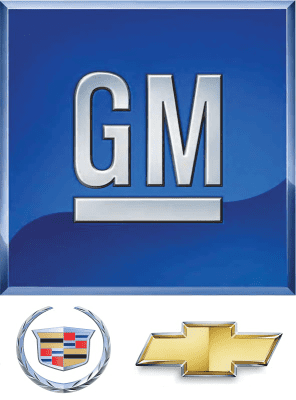 Well, GM has decided to recreate the One Ford strategy into its own version: it will have two global brands, Chevrolet in the mainstream segment and Cadillac in the premium segment. “At the same time, the Holden, Buick, GMC, Baojun, Opel and Vauxhall brands are being carefully cultivated to satisfy as many customers as possible in select regions“, according to GM CEO Dan Akerson in the 2011 GM Annual report. He’s basically saying Opel will stay a Europe-only brand, and won’t be allowed to expand in large volumes outside of the continent, while facing increased competition from sister Chevrolet in its home market. This is basically killing the brand, something which General Motors will deny strongly every time you ask them. Especially with the European car market slumping, every automaker that relies too heavily on Europe is in trouble. Fiat, PSA Peugeot-Citroen, Renault and Seat are all suffering losses, but at least they are have growth opportunities outside of Europe, or in case of Seat, are allowed growth opportunities by their parent company.
Well, GM has decided to recreate the One Ford strategy into its own version: it will have two global brands, Chevrolet in the mainstream segment and Cadillac in the premium segment. “At the same time, the Holden, Buick, GMC, Baojun, Opel and Vauxhall brands are being carefully cultivated to satisfy as many customers as possible in select regions“, according to GM CEO Dan Akerson in the 2011 GM Annual report. He’s basically saying Opel will stay a Europe-only brand, and won’t be allowed to expand in large volumes outside of the continent, while facing increased competition from sister Chevrolet in its home market. This is basically killing the brand, something which General Motors will deny strongly every time you ask them. Especially with the European car market slumping, every automaker that relies too heavily on Europe is in trouble. Fiat, PSA Peugeot-Citroen, Renault and Seat are all suffering losses, but at least they are have growth opportunities outside of Europe, or in case of Seat, are allowed growth opportunities by their parent company.
What should GM do with Opel then?
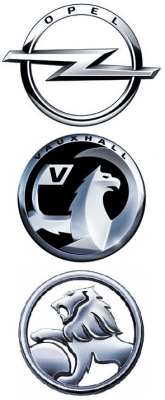 General Motors have tried to sell Opel, but reconsidered this strategy as they don’t have a reasonable alternative in the continent, because Chevrolet as a bargain-basement brand won’t be able to replace established brands such as Opel and Vauxhall. So General Motors should stop drooling over Ford’s strategy and realize they are a world class manufacturing and marketing powerhouse, they shouldn’t do what their competitor is doing, they should do what’s best for themselves. Wake up, GM! Nurture your local brands, as they have “home-field advantage”, something Toyota, Ford and Chevrolet can’t offer in Europe. Vauxhall is considered a British brand, Opel a German brand, and Holden an Australian brand, all appealing to customers looking to support their local manufacturers. That’s virtually free marketing, and an almost guaranteed minimum number of sales in those countries. Let them share technology, platforms and content with each other and with Chevrolet (and with Buick in China) in order to benefit from economies of scale in R&D and purchasing, so they don’t have a cost disadvantage compared to other “local” brands like Fiat and Renault who do have overseas markets. Before it’s too late, please.
General Motors have tried to sell Opel, but reconsidered this strategy as they don’t have a reasonable alternative in the continent, because Chevrolet as a bargain-basement brand won’t be able to replace established brands such as Opel and Vauxhall. So General Motors should stop drooling over Ford’s strategy and realize they are a world class manufacturing and marketing powerhouse, they shouldn’t do what their competitor is doing, they should do what’s best for themselves. Wake up, GM! Nurture your local brands, as they have “home-field advantage”, something Toyota, Ford and Chevrolet can’t offer in Europe. Vauxhall is considered a British brand, Opel a German brand, and Holden an Australian brand, all appealing to customers looking to support their local manufacturers. That’s virtually free marketing, and an almost guaranteed minimum number of sales in those countries. Let them share technology, platforms and content with each other and with Chevrolet (and with Buick in China) in order to benefit from economies of scale in R&D and purchasing, so they don’t have a cost disadvantage compared to other “local” brands like Fiat and Renault who do have overseas markets. Before it’s too late, please.
Also read: How does GMs Global Brand Strategy fit in Europe? on what I think GM should do with Chevrolet and Cadillac in Europe.









